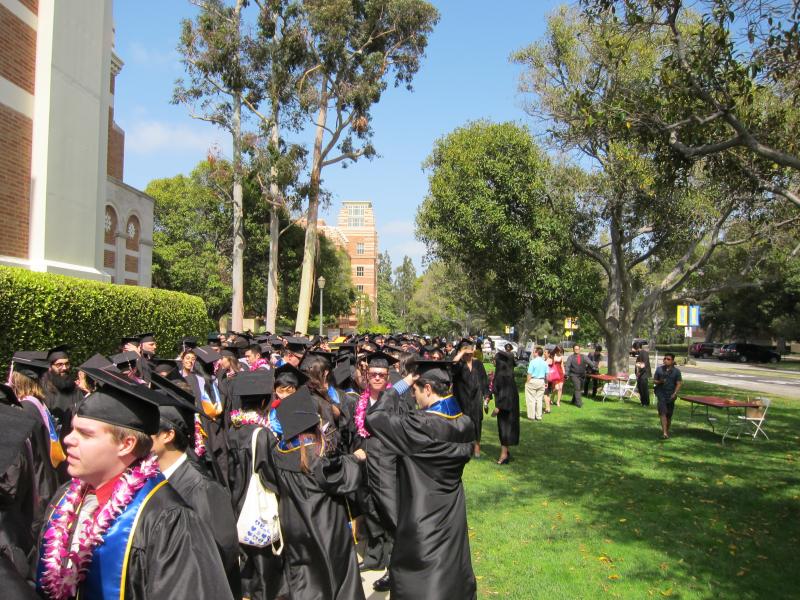 View Winners →
View Winners → 
UCLA graduates. | Photo by Neeta Lind (CC BY 2.0)
By Suzanne Potter, Producer
Some good news to report on college attainment rates – the number of students who have earned a degree, certificate or credential has jumped 16% from 2009 to 2021, according the new “Stronger Nation” report from the Lumina Foundation.
The report finds a 55.8% attainment rate for Californians ages 25 to 64.
Courtney Brown – vice president of impact and planning at Lumina Foundation – said while students of all races made progress, Latino attainment in California stands at just over 22%, compared to almost 60% for White students.
“Although we saw 2.5% jump in attainment for the Latino and Hispanic population, and almost 2% for Black Americans,” said Brown, “you can see that incredible disparities continue to exist between Black Americans and Latino Americans on one end, and White Americans on the other end.”
Last year, Gov. Gavin Newsom set a goal that 70% of the adult population should have some post-secondary education by 2030.
The top five counties with the highest percentage of students with an associate’s degree or higher are all in the Bay Area – while rural Lassen County in the far northeastern part of the state has the lowest rate, at just over 18%.
Michelle Siquieros – president of the Campaign for College Opportunity, based in Los Angeles – said schools need to make it much easier for community college students to transfer to a four-year school.
“The transfer rates from community colleges to our four-year universities and completion rates in general at the community colleges are very low, especially for Black and Latinx students,” said Siquieros. “So we’ve got to do a better job of supporting students to complete a degree and to transfer.”
The report also finds that in order to compete, California will need to significantly increase the number of people who enroll in programs and earn all types of credentials beyond high school.
Support for this reporting was provided by Lumina Foundation.
Disclosure: Parents Anonymous contributes to our fund for reporting on Children’s Issues, Family/Father Issues, Social Justice. If you would like to help support news in the public interest, click here.
References:
A STRONGER NATION: LEARNING BEYOND HIGH SCHOOL BUILDS AMERICAN TALENT the Lumina Foundation 2023











































































































